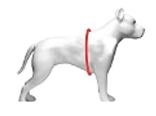Why Were Dogs Domesticated?

Dogs have been long-lasting companions for centuries. It's actually really fascinating to think about how dogs branched off from their wolf ancestors years before becoming lifelong friends. But at what point in time did this domestication begin? Did dog domestication start intentionally and how did we go from hunter-gatherer settings to the modern dog?
For years, archaeologist and geneticist findings have prompted closer examinations of the origins of dogs. In this blog post, we cover the origins of domestic dogs and how our relationship between these beloved animals evolved from human hunter-gatherers' partners to man's best friend.
Where did domestic dogs come from?
Canis familiaris, or domestic dogs, were the first species to be domesticated by human groups. According to Britannica, "Genetic evidence suggests that dogs descended directly from wolves (Canis) and that the now-extinct wolf lineages that produced dogs branched off from the line that produced modern living wolves sometime between 27,000 and 40,000 years ago."
While the origins pointing the domestication of ancient dogs to the gray wolf are more concrete and confident, there's still debate when it comes to where the domestication occurred. Just in the last few years, geneticists conducted a genetic study of a 10,000-year-old canis lupus (wolf) bone found in Alaska that may have answers to their entry point in the Americas. Their origins, however, and theorized to be outside of North America, or rather the Americas as wolves arrived prior to the continents being divided by a large glacier.
Brittanica shared, "The timing and location of dog domestication is a matter of debate. There is strong genetic evidence, however, that the first domestication events occurred somewhere in northern Eurasia between 14,000 and 29,000 years ago."
We know what you're probably thinking: what about the first dogs of Ancient Egypt? Canines were held in high regard there.
That may be true but dogs actually are reported to have entered Africa from Eurasia. According to Wikipedia's reference from "The Early to Late Neolithic Archeofaunas from Nabta and Bir Kiseiba", "The oldest dog remains to be found in Africa date 5,900 years before present (YBP) and were discovered at the Merimde Beni-Salame Neolithic site in the Nile Delta, Egypt. The next oldest remains date 5,500 YBP and were found at Esh Shareinab on the Nile in Sudan. This suggests that the dog arrived from Asia at the same time as domestic sheep and goats."
The possibilities are endless here but what's been the general consensus is that the domestication of dogs is not an event that can be isolated. Animals and dogs of any breeds through Darwinism adapt to their environments and circumstances which could well mean that the canids domestication sparked in different locations at different times.
What led to dogs being domesticated then?
NewScientist.com shared, "Dogs were domesticated when ice sheets covered much of northern Eurasia and the climate was colder than today. During this time, humans and wolves would have competed for food, as both are top predators."
Because of this, the development of the relationship between early humans and wild wolves wasn't intentional. It was inadvertent. Wolf populations followed where the food was as did early humans, pitting two predators together in a sense but the hunter-gatherer groups benefited these populations. Wolves in those arctic temperatures would require an excess amount of meat which the humans could supply as their intake is significantly smaller.
To further add to the cause behind domestication, wolves and humans becoming closer in proximity could have aided in sparking behavior traits of wolf pups, further strengthening bonds. To be specific about the behavior, we're talking about the natural playfulness of wolf pups.
According to Stockholm University in their coverage of Christina Hansen Wheat's studies at the Department of Zoology's, scientists witnessed wolf pups play catch/fetch.
They shared, "The findings were made serendipitously when researchers tested 13 wolf puppies from three different litters in a behavioural test battery designed to assess various behaviours in young dog puppies. During this series of tests, three 8-week-old wolf puppies spontaneously showed interest in a ball and returned it to a perfect stranger upon encouragement. The discovery comes as a surprise because it had been hypothesized that the cognitive abilities necessary to understand cues given by a human, such as those required for a game of fetch, arose in dogs only after humans domesticated them at least 15,000 years ago."
This is just a sampling of tips and informational posts we offer at Joyride Harness. You can find more content including tips and tricks and how-tos for caring for your dog on our blog in this section.
























